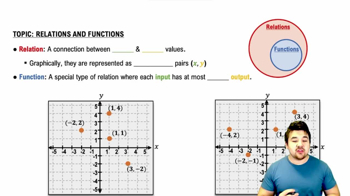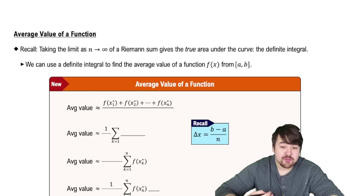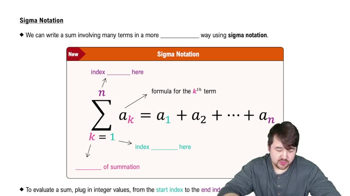The following table gives the position of an object moving along a line at time . Determine the average velocities over the time intervals , , and . Then make a conjecture about the value of the instantaneous velocity at . <IMAGE>
Table of contents
- 0. Functions7h 54m
- Introduction to Functions16m
- Piecewise Functions10m
- Properties of Functions9m
- Common Functions1h 8m
- Transformations5m
- Combining Functions27m
- Exponent rules32m
- Exponential Functions28m
- Logarithmic Functions24m
- Properties of Logarithms36m
- Exponential & Logarithmic Equations35m
- Introduction to Trigonometric Functions38m
- Graphs of Trigonometric Functions44m
- Trigonometric Identities47m
- Inverse Trigonometric Functions48m
- 1. Limits and Continuity2h 2m
- 2. Intro to Derivatives1h 33m
- 3. Techniques of Differentiation3h 18m
- 4. Applications of Derivatives2h 38m
- 5. Graphical Applications of Derivatives6h 2m
- 6. Derivatives of Inverse, Exponential, & Logarithmic Functions2h 37m
- 7. Antiderivatives & Indefinite Integrals1h 26m
- 8. Definite Integrals4h 44m
- 9. Graphical Applications of Integrals2h 27m
- 10. Physics Applications of Integrals 3h 16m
- 11. Integrals of Inverse, Exponential, & Logarithmic Functions2h 31m
- 12. Techniques of Integration7h 41m
- 13. Intro to Differential Equations2h 55m
- 14. Sequences & Series5h 36m
- 15. Power Series2h 19m
- 16. Parametric Equations & Polar Coordinates7h 58m
1. Limits and Continuity
Introduction to Limits
Problem 13c
Textbook Question
The position of an object moving vertically along a line is given by the function s(t)=−16t2+128t. Find the average velocity of the object over the following intervals.
[1,2]
 Verified step by step guidance
Verified step by step guidance1
Identify the formula for average velocity over an interval [a, b], which is given by the change in position divided by the change in time: \( v_{avg} = \frac{s(b) - s(a)}{b - a} \).
Substitute the given interval [1, 2] into the formula, where \( a = 1 \) and \( b = 2 \).
Calculate the position at \( t = 2 \) using the function \( s(t) = -16t^2 + 128t \). Substitute \( t = 2 \) into the equation to find \( s(2) \).
Calculate the position at \( t = 1 \) using the same function. Substitute \( t = 1 \) into the equation to find \( s(1) \).
Substitute \( s(2) \) and \( s(1) \) into the average velocity formula: \( v_{avg} = \frac{s(2) - s(1)}{2 - 1} \), and simplify to find the average velocity over the interval [1, 2].
 Verified video answer for a similar problem:
Verified video answer for a similar problem:This video solution was recommended by our tutors as helpful for the problem above
Video duration:
3mPlay a video:
Was this helpful?
Key Concepts
Here are the essential concepts you must grasp in order to answer the question correctly.
Position Function
The position function describes the location of an object at any given time. In this case, the function s(t) = -16t² + 128t represents the vertical position of an object in motion, where 't' is time. Understanding this function is crucial for analyzing the object's movement and calculating other related quantities like velocity.
Recommended video:

Relations and Functions
Average Velocity
Average velocity is defined as the change in position divided by the change in time over a specific interval. It can be calculated using the formula: Average Velocity = (s(t2) - s(t1)) / (t2 - t1), where s(t) is the position function. This concept is essential for determining how fast the object is moving on average between two points in time.
Recommended video:

Average Value of a Function
Interval Notation
Interval notation is a mathematical notation used to represent a range of values. In this question, the interval [1, 2] indicates that we are interested in the object's motion from time t = 1 to t = 2. Understanding interval notation is important for correctly interpreting the time frame over which the average velocity is calculated.
Recommended video:

Sigma Notation

 6:47m
6:47mWatch next
Master Finding Limits Numerically and Graphically with a bite sized video explanation from Patrick
Start learningRelated Videos
Related Practice
Textbook Question
